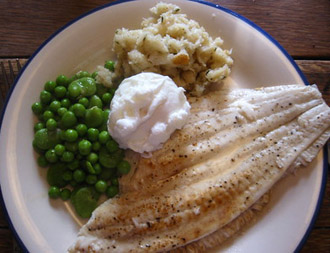Selection and storage
If you grow celeriac in your backyard, it should be ready for harvest by August but can remain available until December. In stores, you can usually find it from September to April.
When purchasing celeriac, opt for medium-sized tubers that are about 3-4 inches in diameter. Look for tubers with a smooth and even surface, as they are easier to peel and have a more subtle flavor. Avoid larger, over-matured roots and those with surface cracks.
Once you bring celeriac home, store it similarly to turnips and carrots. It has a good shelf life and can be stored for 3-4 months if kept between 0°C and 5°C with high relative humidity, making sure it doesn’t dry out in between. Store it in a plastic bag in the vegetable compartment of your refrigerator, but avoid storing it in the deep freezer.
Preparation and serving methods
To prepare celeriac, start by scrubbing and washing the root under cold running water to remove any surface sand and soil. Afterward, pat it dry with an absorbent cloth. Trim the top end and base, and then proceed to cut the entire tuber into quarters or cubes. Use a thick knife to scrape off the outer skin.
Similar to potatoes, celeriac can turn brown when exposed to air. To prevent this, simply rub a slice of lemon or orange over the cut surface. You can then chop its white flesh into cubes or slices according to your preference before incorporating it into your recipes. Boiled celeriac can also be mashed and added to other vegetables.
Here are some serving tips:
 |
| Plaice served with green peas, broad beans and mashed celeriac. |
-
Celeriac can be employed in recipes much like other root vegetables, imparting a delicate celery flavor to dishes.
-
It can be used raw in salads, coleslaw, and as a garnish (grated) in dishes such as French celeriac remoulade.
-
When boiled and mashed, celeriac creates a delightful combination with mashed potatoes. This mixture pairs well with fish, meat, and other root vegetables like potatoes, beets, kohlrabi, turnips, and carrots, among others.
-
Root celery can also enhance soups, sauces, pies, and casseroles.
Safety profile
Celeriac contains several furanocoumarin compounds, including psoralen, bergapten, xanthotoxin, and isopimpinellin, which can potentially cause skin burns (photo-toxicity) in sensitive individuals. Additionally, like celery, it should be consumed in moderation by pregnant women.
Similarly, individuals taking diuretic medications and anti-coagulant medications should exercise caution when consuming this root. Please refer to this medical disclaimer for further information.
≻≻-Back to Vegetable from Celeriac. Visit here for an impressive list of vegetables with complete illustrations of their nutrition facts and
health benefits.
≻≻-Back to Home page.
Further reading:
-
Refer Stanford School of Medicine Cancer information Page- Nutrition to Reduce Cancer Risk.

